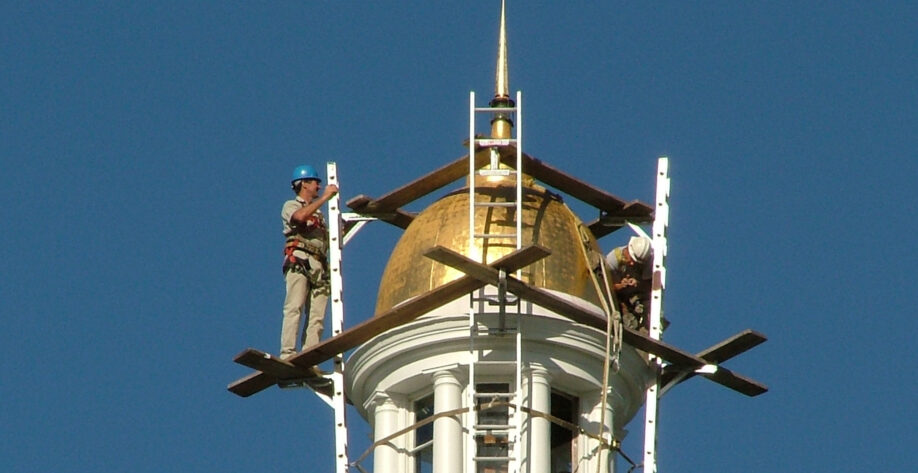When we hear the words historic preservation, notions of “antique” often come to mind. Boston’s Old State House (c.1713) and the Washington Monument (c.1848), both recently restored, reflect true history in both their age and their cultural importance. Although the iconic Chrysler Building in New York City (c.1928-30) is from a much later era, it similarly reflects the cultural significance of 1920’s architecture.
Buildings constructed in the 1920s are approaching their 100 year mark. In many cases, their durable enclosure systems (commonly masonry, steel framing, wood, and glass) have lasted with minimal, if any, maintenance. Due to age and deferred maintenance, these materials may be beyond their anticipated life cycle, resulting in a range of problems that, if left unaddressed, may result in life safety issues, disruption of building occupancy, and increased repair costs.
A sampling of 1920’s enclosure component issues that must be addressed include:
- Transitional Facade Construction. This construction style incorporates a steel or concrete structural frame with masonry back-up and infill. Masonry and concrete often encase the structural steel frame. Deterioration problems may be associated with a lack of detailing to accommodate differential movement (resulting in cracking), and reliance on the “mass” of the exterior masonry wall to prevent water infiltration and exfoliation (corrosion) of the embedded structural steel and resultant cracks and spalls. All must be addressed in any ongoing restoration project.
- Misconception that Masonry is Maintenance-Free. In the 1920s, masonry was often seen as a high craft. However, even with the best materials and workmanship, it requires maintenance. The service life of mortar joints is about 50 years, after this time repointing is often required. Without such maintenance, open joints will allow moisture into the wall assembly, resulting in accelerated damages to backup walls and increased repair costs.
- Lack of Energy Efficiency. Improving energy efficiency inside the enclosure of this older stock of 1920s-era buildings requires technical consideration for the type, thickness, and placement of vapor barriers. Adding insulation to the interior face of exterior walls, if not adequately designed, can result in accelerated deterioration of the masonry and can lead to mold and water infiltration issues.
- Original Windows and Doors. While original, uninsulated windows and doors contribute to the heritage of the building, they also contribute to poor thermal performance, experience deterioration or corrosion of the frames, or become inoperable. If replacements are necessary, they can be done in a way that maintains the historic qualities of the building while improving the overall energy efficiency.
Many 1920s buildings are either on the State or National Register of Historic Places, or certainly have enough historic value to be considered candidates. The Federal Government’s published guidelines, such as The Secretary of the Interior’s Standards for the Treatment of Historic Properties, are among the tools available when considering restoration.
As this group of buildings rises in historic importance, any deferred maintenance should be addressed. These valuable buildings deserve repair and restoration that will allow them to endure another century and beyond.

